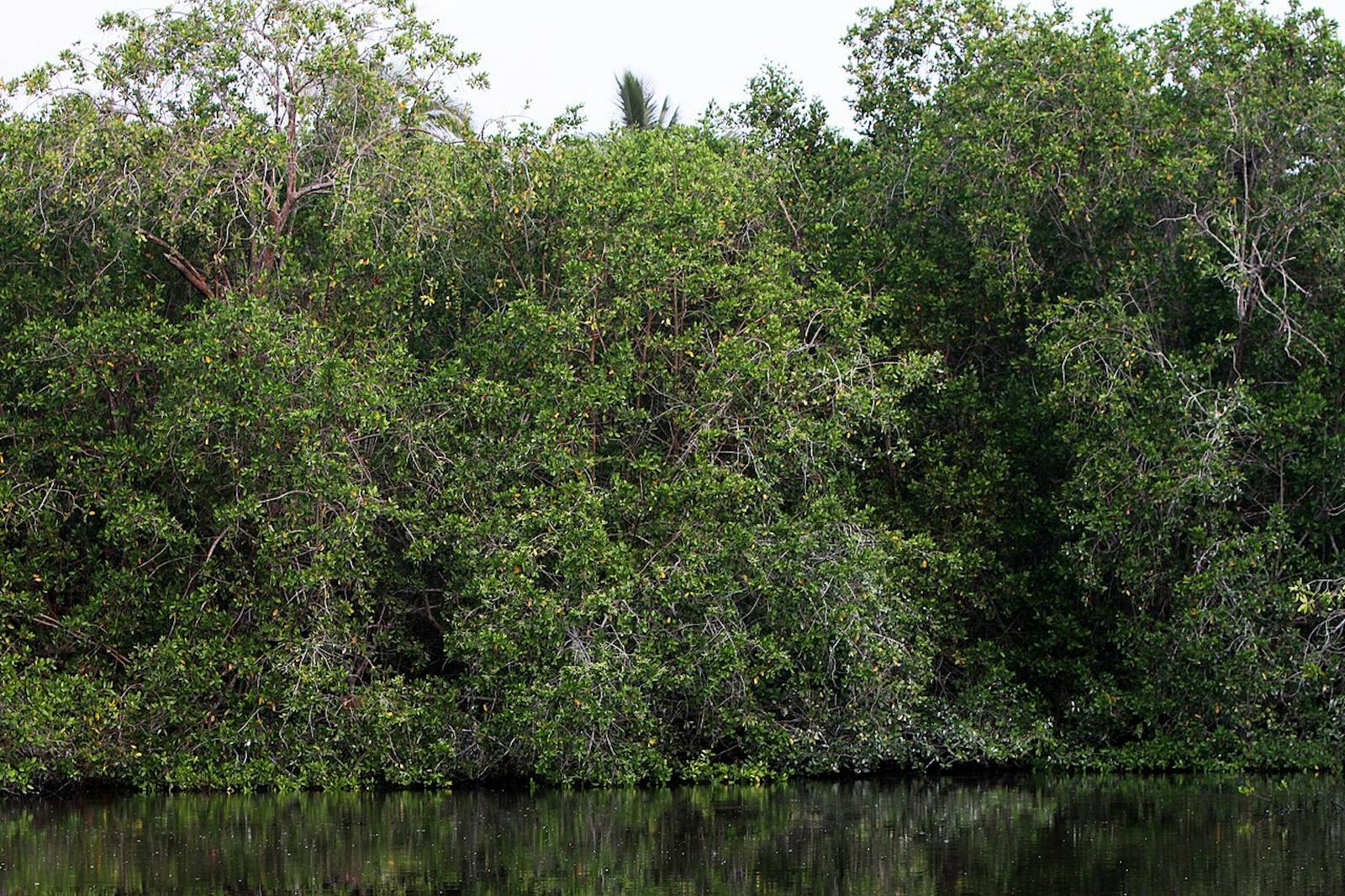Northern Mesoamerican Pacific Mangroves
The ecoregion’s land area is provided in units of 1,000 hectares. The protection goal is the Global Safety Net (GSN1) area for the given ecoregion. The protection level indicates the percentage of the GSN goal that is currently protected on a scale of 0-10.
Bioregion: Mexican Dry & Coniferous Forests (NT28)
Realm: Southern America
Ecoregion Size (1000 ha):
821
Ecoregion ID:
614
Conservation Target:
46%
Protection Level:
10
States: Mexico
The northern extent of mangrove forests in the Pacific is aligned with the intercontinental flight path of many Neotropical migrant bird species. However, there are also many important resident species, including the San Blas jay. Its dark face and under parts contrast with its brilliant turquoise back, wings, and tail, its appearance unmistakable around the dark green mangrove foliage.
The jays are very social creatures living in groups of up to 30 individuals. They are also uniquely social caregivers: females lay 3–4 pinkish eggs with darker rufous spots which are cared for by the entire group. This cooperative breeding strategy helps strengthen social bonds, but also ensures that the young are well cared for.
.jpg)
The flagship species of the Northern Mesoamerican Pacific Mangroves ecoregion is the San Blas jay. Image credit: iNaturalist
In the southern Pacific, mangroves are responsible for most of the primary productivity in coastal lagoons. They supply lagoons with large quantities of dead debris, which is later used by fish and invertebrates as a source of food. Mangroves forests also support the continuous formation of soil, maintaining the biodiversity of terrestrial and aquatic environments by preventing erosion of the coast. The Northwest Mexican Coast Mangroves are composed of two main mangrove areas located on the Pacific Coast and on the Gulf of California coast.
The climate in both areas is dry with occasional rains in summer and winter, averaging less than 200 mm/year. The dominant species of mangroves in the ecoregion include red mangrove (Rhizophora mangle), white mangrove (Laguncularia racemosa), black mangrove (Avicennia germinans), and button mangrove (Conocarpus erectus). The salinity of the water and the degree of flooding in the area determine individual species abundance. The plant biota is not well developed due to its intolerance to permanent floods.
The Northern Mesoamerican Pacific mangroves are considered crucial habitat for more than 252 species of migratory birds and house many other species of high ecological and commercial value. There are many reptiles and amphibians like green iguanas, Mexican beaded lizards, yellow-bellied slider, and an important population of Morelet’s crocodile in the freshwater marshes associated with tropical palm forest.
Four species of endangered sea turtles use the coast of Nayarit as a nesting site, including leatherback turtles, olive ridley turtles, hawksbill turtles, and green turtles. A few of the mammal species found in this ecoregion include nine-banded armadillo, white-tailed deer, coyote, Baird’s tapir, jaguar, sac-winged bat, northern tamandua, and hog-nosed skunk.
Although many protected areas intersect this ecoregion along their coastal limits, very few areas are protected exclusively for this northernmost mangrove ecoregion (except for Estero "El soldado" in Sonora, Mexico near the northern limit).
The mangrove ecosystems in this ecoregion have been severely disturbed over the past century by tourism, port and shipping expansion (industrial pollution), and clearing for agriculture and materials collection (wood). The most severe threats currently are from fuelwood collection, sedimentation from agricultural runoff, non-sustainable hunting, shrimp farming, and changes in the water flow patterns by road building.
Long-term threats to the region include artificial drainage and construction of dams for use as cultivable lands and of highways that would alter hydrological regimes. Drainage of freshwater input also leads to a loss of the nutrients stored by mangroves, which destabilizes the communities that depend on them. The introduction of exotic species such as the common carp and blue tilapia also alters the ecological balance with the native members of these communities.
Priority conservation actions for the next decade are to: 1) manage of the mangrove communities to control deforestation rates; 2) restrict non-sustainable harvesting of mangrove resources; and 3) reduce industrial pollution into the mangrove ecosystems.
Citations
1. Baquero, A. 2018. Western South America: Along the Pacific coast of Ecuador https://www.worldwildlife.org/ecoregions/nt0214 Accessed October 4, 2018
2. Wallace, B.P., Tiwari, M. & Girondot, M. 2013. Dermochelys coriacea. The IUCN Red List of Threatened Species 2013: e.T6494A43526147. http://dx.doi.org/10.2305/IUCN.UK.2013-2.RLTS.T6494A43526147.en. Downloaded on 15 October 2018.
3. Olson, David M., Eric Dinerstein, Gilberto Cintrón and Pia Iolster. 1996. A Conservation Assessment of Latin America and the Caribbean: Report from WWF's Conservation Assessment of Mangrove Ecosystems of Latin America and the Caribbean Workshop. WWF, Washington D.C.



